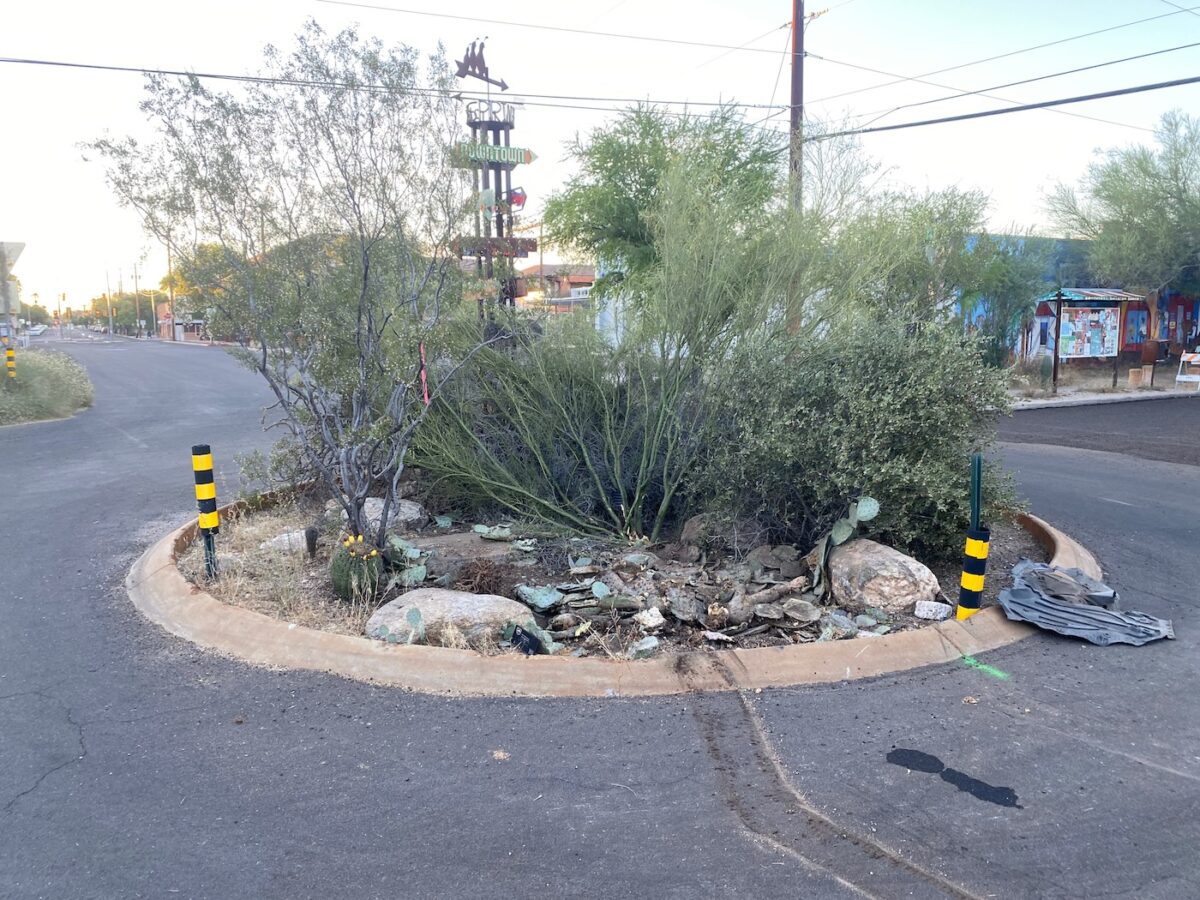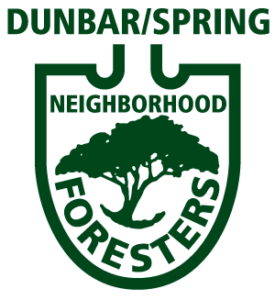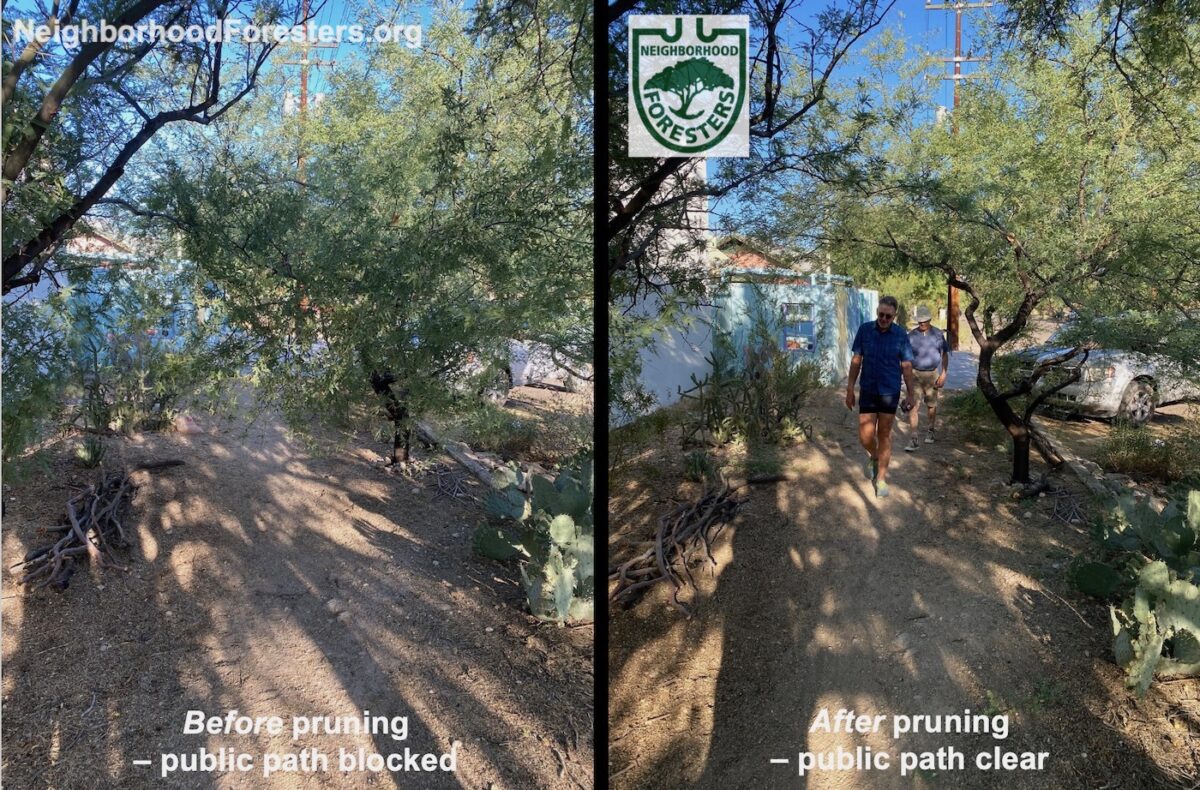Summer 2023
Dunbar/Spring Neighborhood Foresters volunteers spent a combined 80 hours in late May, June and early July pruning vegetation along our neighborhood’s street-side public paths in the public rights-of-ways adjoining our streets to maintain the city’s required minimum five-foot width and seven-foot height of clearance.
We also worked over an additional 50 hours into August planting, seeding, weeding, picking up litter, removing storm damage from fallen tree limbs, and doing additional stewarding in our in-street green infrastructure, and with neighbors in their yards.
In September we worked over 3o more hours weeding, planting, organizing, and pruning.
See here for more on our pruning and mulching stewarding parties and efforts

Photos: Brad Lancaster
This required clearance for our paths is practical, not excessive.
We need a five-foot width of clearance for people to comfortably walk side-by side. And we need a seven-foot height of clearance for kids on parents’ shoulders or tall folks such as myself (while I am 6’ 4” tall, when I’ve got my boots and sun hat on, the top of my hat is at a height of 6’ 9”.
Our footpaths should be more alluring and safe than our streets.
The goal was to get this work done before Brush & Bulky pick up scheduled for the week of July 3.
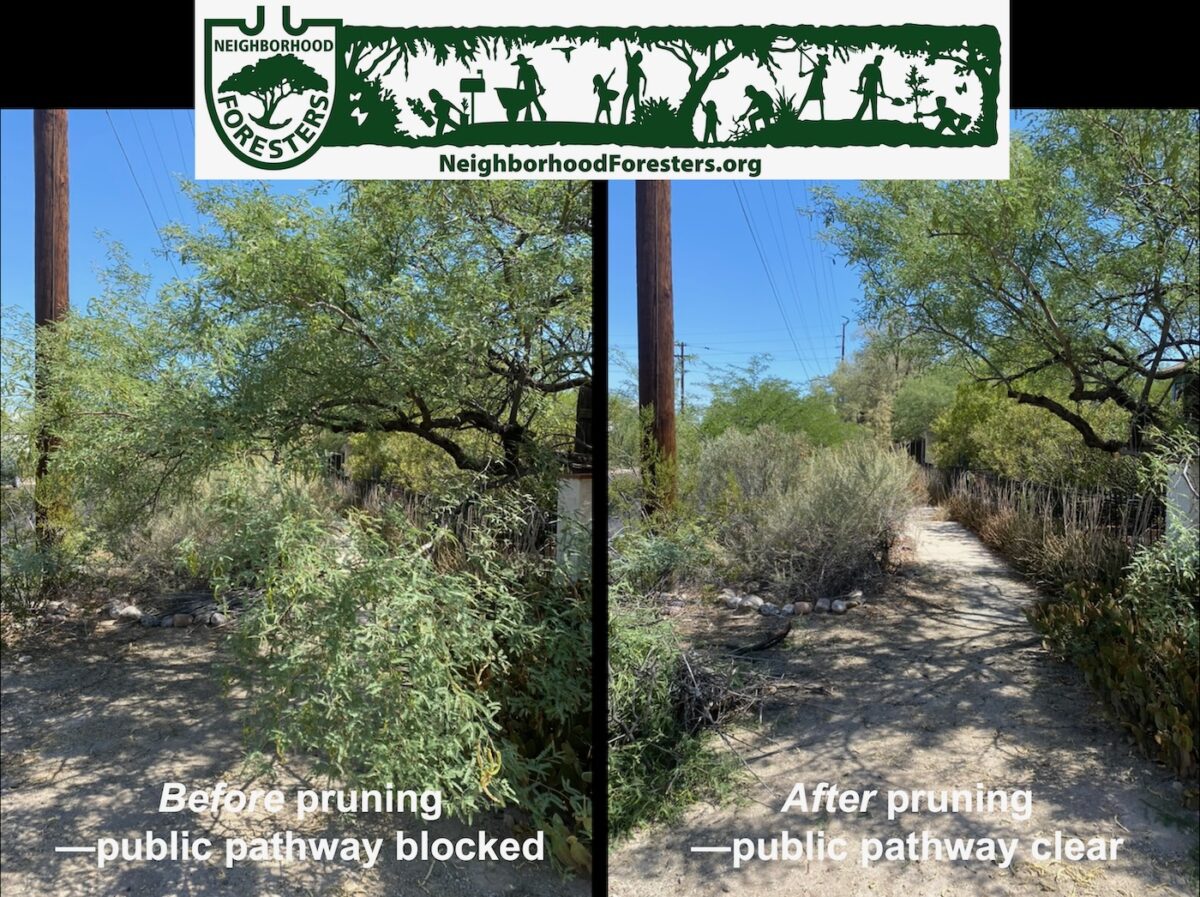
Photos: Brad Lancaster
While the woody material from the prunings gets hauled away, much of the leaves and their fertility remain, as they dry and drop off before pick up; and they make an excellent water-absorbing, water-holding, soil-building, fertile mulch.
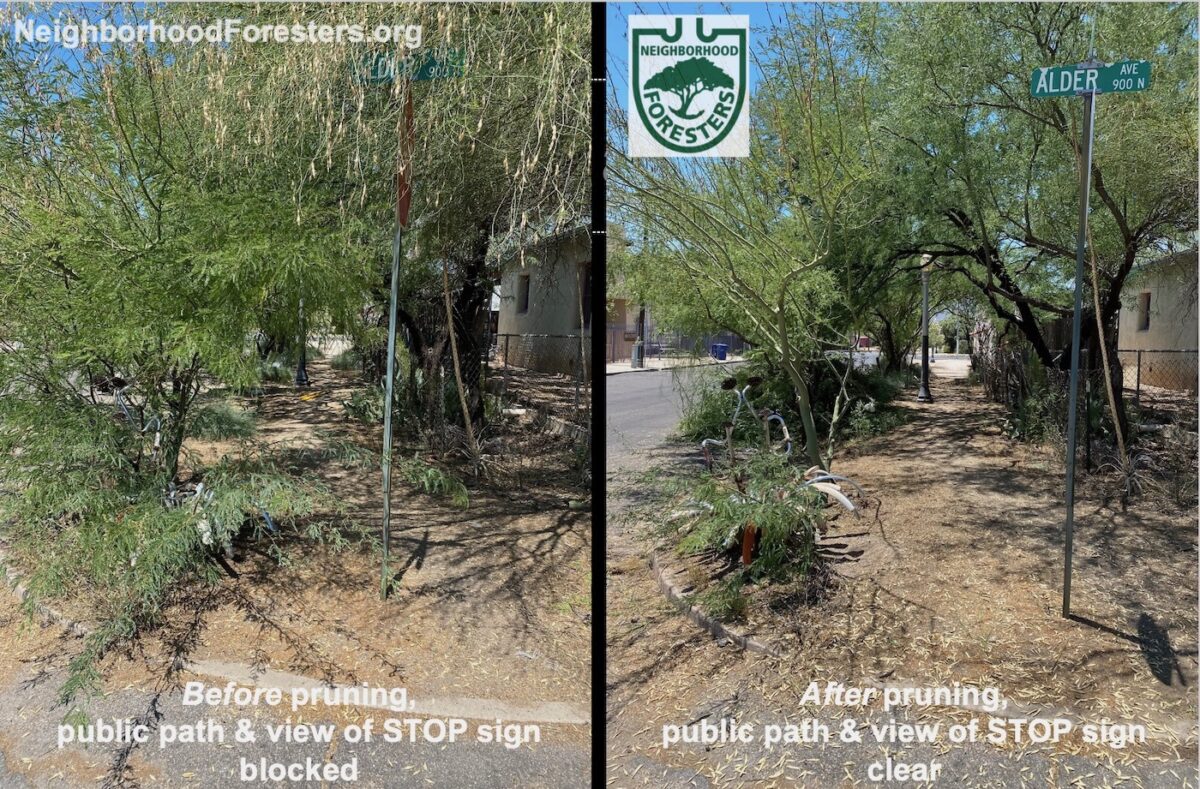
Photos: Brad Lancaster
It essential that as a community we steward our native food forest as well as plant it (since 1996 we’ve planted over 1,700 trees, thousands of understory plants, & over a million gallons of stormwater per year to freely irrigate it all). Pruning to maintain and enhance walkability is key to this as it enables all to access and enjoy the fruits of our near 30-year planting efforts.
We want folks to love and appreciate our growing forest—NOT resent or hate it—so it keeps growing. In the past (including earlier this year), we’ve lost large and beautiful canopy trees when individuals got irritated by low branches in the public right-of-way, and rather than strategically prune the tree to best address the issue, they removed the entire tree and its shade.
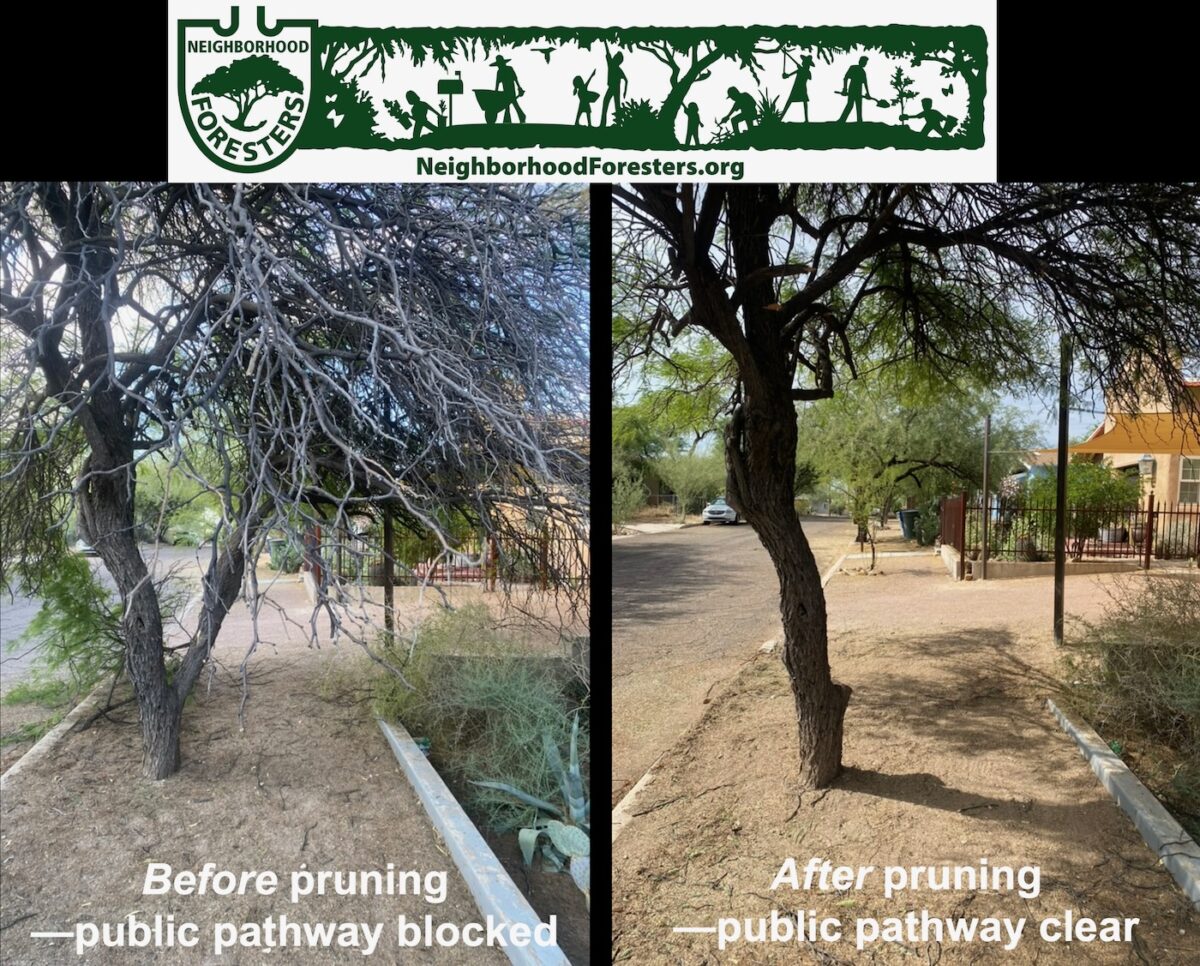
Photos: Brad Lancaster
NOTE: that it is the responsibility of the property owner adjoining the section of public right-of-way (section of land between property line and street curb) by their property to maintain the city’s required minimum 7-foot height and 5-foot width of clearance for the public walkway.
Pruning help
The Dunbar/Spring Neighborhood Foresters can help you with that effort. Just contact us at NeighborhoodForesters@gmail.com.
We also hold hands-on pruning workshops twice a year (in September and February) led by a certified arborist, so you can learn how to properly prune your vegetation to maximize its health.
If there are areas of the street-side public pathways that do not get pruned and you find your access hindered or blocked, you can speak with the adjoining property owner, and/or file a complaint with the City and they will notify the adjoining property owner of their need to prune.
To file a complaint with the city regarding pruning needing to be done along a public pathway go here
and/or
email TDOTConcerns@tucsonaz.gov
To file a complaint with the city regarding a vehicle illegally parked atop a public walkway call ParkTucson at (520) 791-5071
The city of Tucson’s Storm to Shade green infrastructure program collaborates with the Dunbar/Spring Neighborhood Foresters to maintain the in-street green infrastructure, such as water-harvesting traffic-calming round-a-bouts in our neighborhood.
Pruning for reasons other than maintaining pedestrian access
Neighborhood foresters also prune vegetation to remove mistletoe infestations, to reduce its spread on the tree being pruned, and other trees in the neighborhood. Mistletoe is a parasite that grows on the tree, and while its green tissue can photosynthesize, it takes water from the host tree and can create such a weight that it breaks the branches it grows on. Native phainopepla birds eat the mistletoe berries and spread their seed when they perch and poop on other trees.
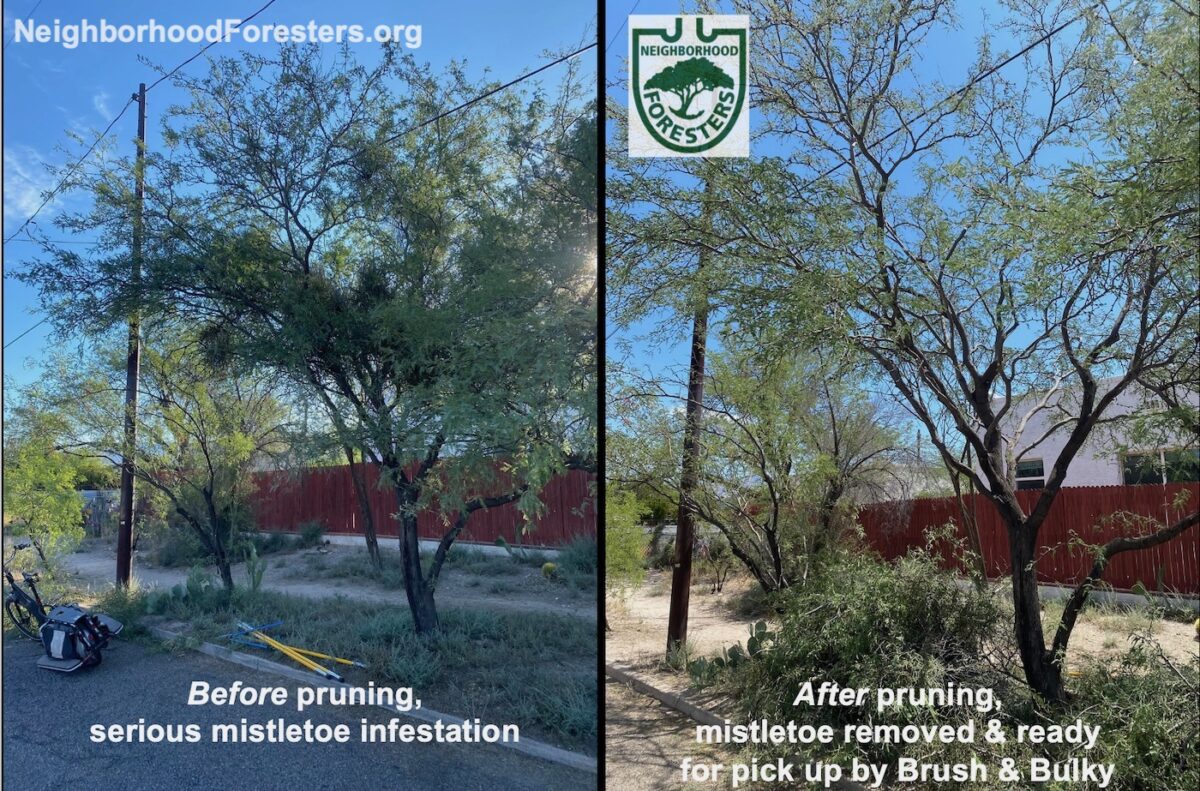
Photos: Brad Lancaster
This is why we actively plant such native berry-producing plants as wolfberries, desert hackberry, condalia, and greythorn, the fruits of which the phainopepla also loves. (These native berry plants are available from local native plant nurseries). This way the phainopepla are well fed and they spread the seed of desired plants rather than potential parasites.
We also prune to maintain visibility of street signs such as STOP and YIELD signs to reduce the chance of accidents.
Want to help us with our efforts?
Join us
by signing up here
and let us know if you want to be on volunteer work crews (we’ll train and supervise you) by emailing us at NeighborhoodForesters@gmail.com
and let us know if you want to be on volunteer work crews (we can train and supervise you, if needed) by emailing us at NeighborhoodForesters@gmail.com
Please consider making a donation
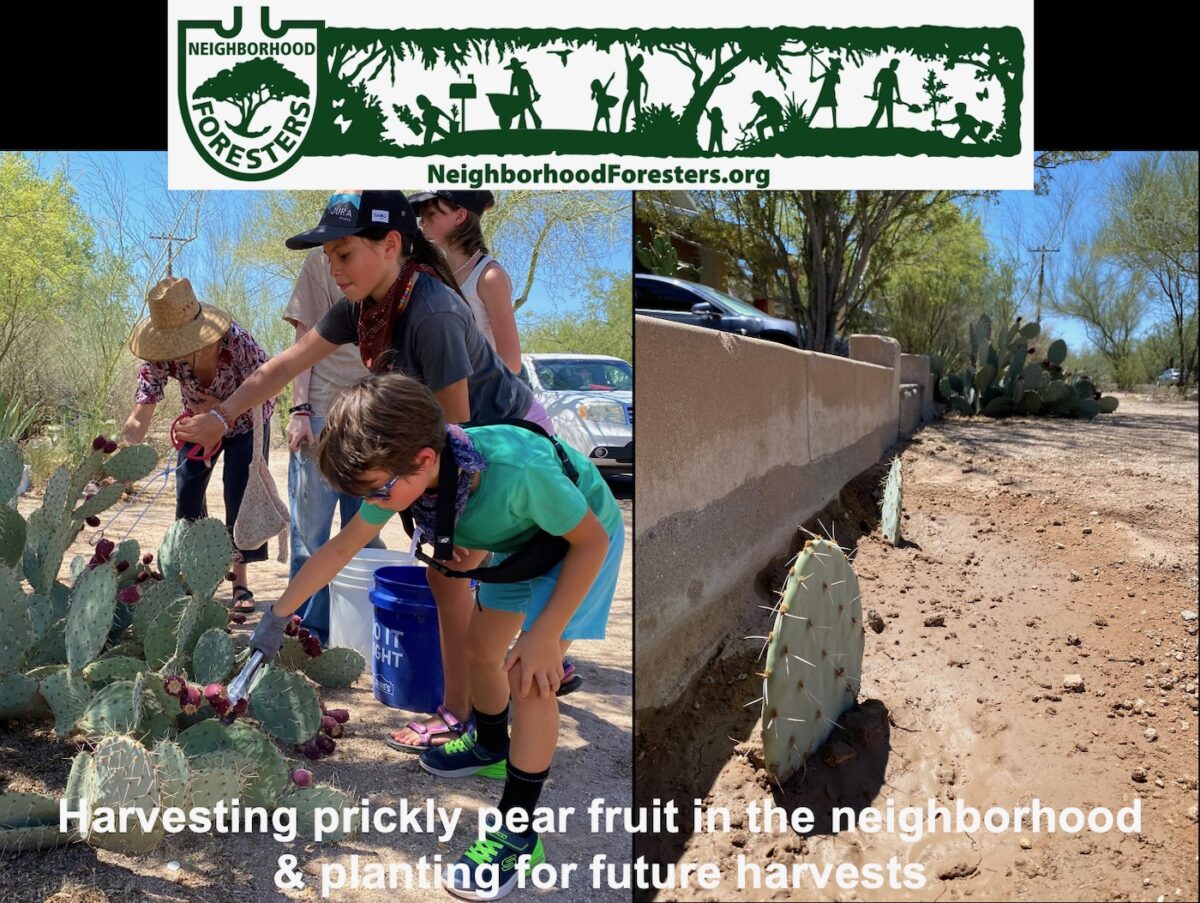
We have been planting native edible cacti in our neighborhood’s public rights-of-ways for years for these harvests, and we keep going. Just planted some more. Photos: Brad Lancaster
